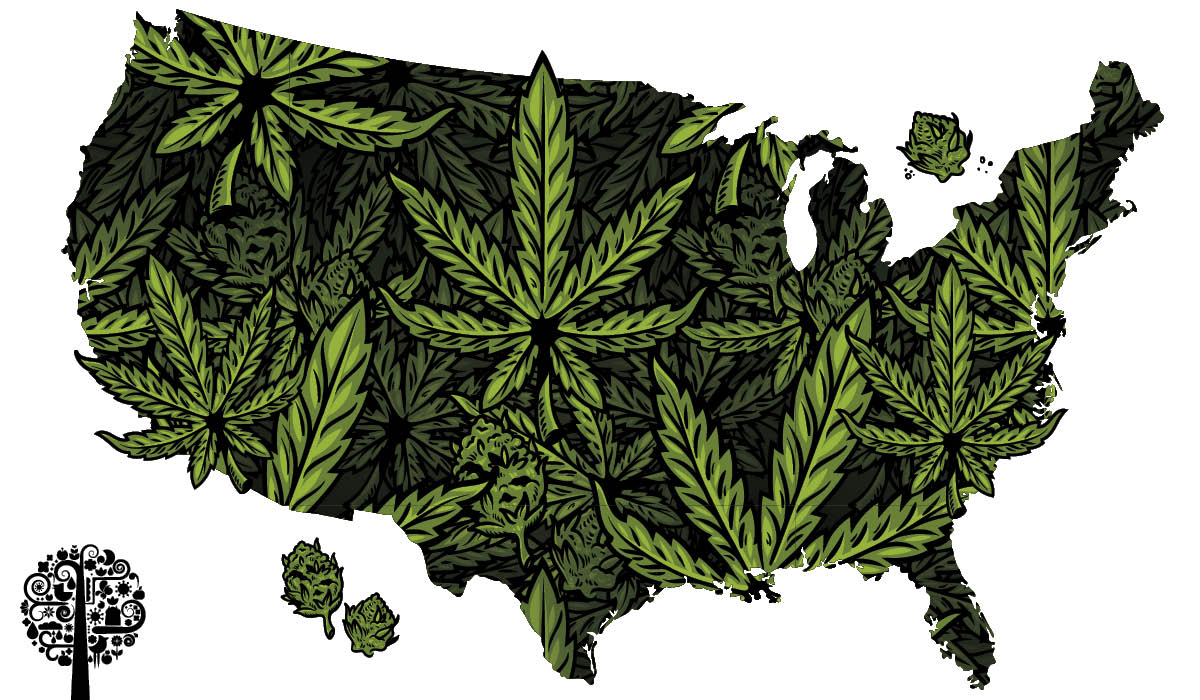North America’s reconciliation with cannabis has been nothing short of a sea-change, marking a shift in perspective on a plant that has spent most of its history in the USA vilified to the point of absurdity. As more and more evidence piled on as to how the persecution of adults choosing to enjoy the medicinal or recreational benefits of cannabis made no sense, a new and vital industry has emerged. Regardless of federal status, by 2025, legal cannabis is projected to surpass $70 billion in annual revenue, with over 600,000 full-time American jobs. As of this posting, cannabis is fully illegal in only five states, and it is widely expected that the federal ban will soon come to an end.
Investment Opportunities
Capital investment in legal cannabis topped $10 billion in 2019, up 40% from the previous year. Most of this money is spent developing massive commercial/industrial infrastructure to produce a quality product in large volume. Easier said than done; unlike most industrial grown crops, the plant is sensitive to environmental fluctuations. Achieving the current standard of what is considered by premium buyers to be a sellable product requires tight controls, with all inputs calibrated and measured on a level more typical of a science lab than a traditional farm.
Water Purification
Water is an extremely important variable in this formula, and water purification equipment is typically required to prevent contamination and ensure consistent mixing of added nutrients, vital to the quality and volume of cannabis yields. In most cases, this means using large-scale reverse osmosis filters, which produce a certain amount of wastewater as contaminants are separated from product water and then flushed down the drain in an effluent stream.

Being a water purification industry professional now for six-plus years, I can say with full confidence that the regulatory demands on water use in growing legal cannabis are unprecedented. When it comes to water volume usage, compared to say, almond farming in the Central Valley, California, or corn/soybeans in the Midwest, compliance to grow legal cannabis seems outrageous. As for wastewater, it seems downright draconian. In one case, HydroLogic supplied municipal-scale water filtration equipment to a massive operation in the Palm Desert that was required to meet a ZERO wastewater compliance demand. Meaning that if they wanted to turn the lights on, they could produce absolutely no wastewater unless it’s trucked off and disposed of professionally.
Innovative Technologies
So, here’s where things get really interesting. Investors are banking on big winners in cannabis and have proved willing to spend capital with a long-term focus. While it might be more expensive to build a zero-waste facility now, by creating less regulated waste and using fewer resources, in the long run, ROI plays out nicely. This infusion of cash to be spent on resource conservation has been a boon to HydroLogic and many others, procuring funds for technology advancements that just didn’t exist prior to legal cannabis. For instance, we have developed a closed-loop nutrient runoff water reclamation system that can process an unlimited volume of wastewater that would normally go down the drain. By extracting the vital nutrient compounds unused by the plants, the end products are reusable purified water and dry fertilizer. Such a system was completely unheard of just a few years ago; HydroLogic now has several operating successfully in the field.
Another innovation we are quite proud of is our automated reclaim condensate system (ARCS)* which collects condensate generated by HVAC systems that are required to regulate grow room temperature. ARCS collects and purifies accumulated condensate and then sends it back into irrigation. In operation, this system can supply as much as 80% of a grower’s daily water demand, with a source that would normally be headed right down the drain or need to be trucked off as waste.
The Future of Indoor Growing
These technologies, as well as others such as improved efficiencies in reverse osmosis and ultra-filtration methods, have wide-ranging implications for the decentralized, indoor future of agriculture. As hydroponic farms continue to take root across the urban landscape, the potential for a resource-lite, self-contained, and environmentally conscious reimagining of big ag is taking shape. In no small way, regulation compliance is pushing conservation innovation as we have never seen before. I guess the saying “no pain, no gain” applies in this regard, and as we look ahead to the work that must be done to find the balance between consumer demand and protecting the only planet we get, our children and grandchildren will thank us for these efforts.
*HydroLogic ARCS was the winner of 2019’s Cannabis & Tech Today’s Sustainability Award for Water Use, with hundreds now in use across North America.